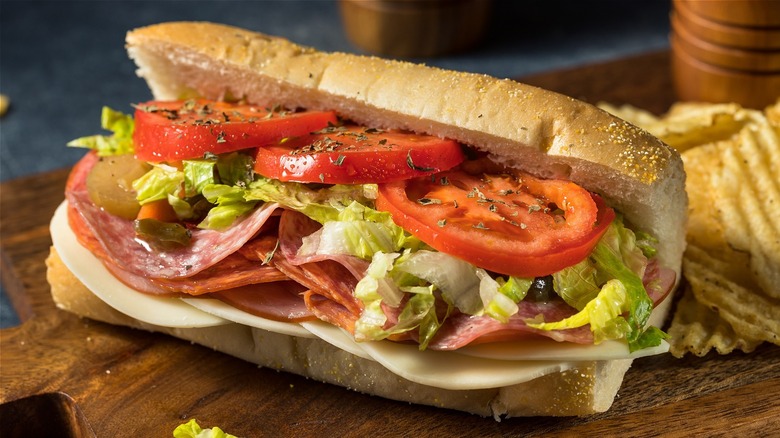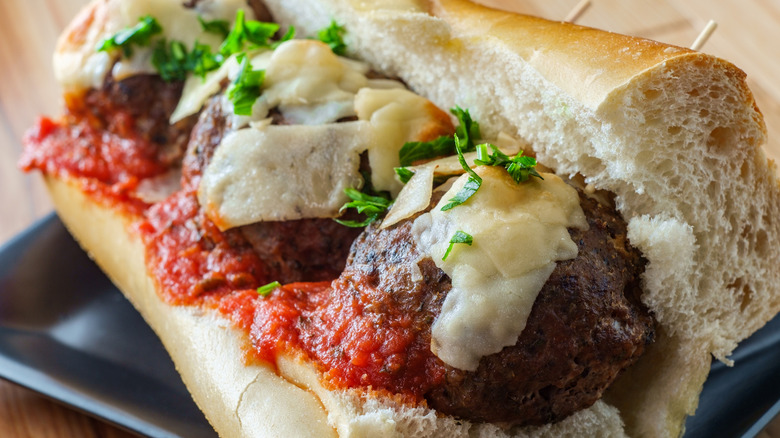The Regional Differences Between Heroes And Subs
Depending on where you live or have traveled in the U.S., you may have alternately heard sandwiches with cold cuts, cheese, veggies, and various condiments piled between bread referred to as "subs" or "heroes." They are both sandwiches served on long, cylindrical rolls, but the main difference is that one is typically only uttered in a very specific part of the country, whereas the other is more commonplace throughout America.
The sub or submarine sandwich is the term we most often hear used in fast food restaurants and mom-and-pop stores. If we examine the names of some of the largest corporate sandwich chains, there are Jersey Mike's Subs, Subway, and Firehouse Subs. You have probably seen the word used almost everywhere. A hero, in contrast to the more ubiquitous usage of the word sub in our culinary vernacular, is a regional variation primarily associated with New York City and Long Island, according to the travel guide Upstate New York. Numerous sources attribute the origin of hero's use as referring to a kind of sandwich to a prominent New York Herald Tribune food writer with the quaint name of Clementine Paddleford. In 1936, she wrote of a sandwich so big "you had to be a hero to eat it."
New York City: where a sandwich can be a hero
Apocryphal or not, the name stuck in the Big Apple. A hero came to be characterized as any big, meaty sandwich loaded with fixings and similar in appearance to an Italian sub, often featuring Italian bread and assorted deli meats such as salami, prosciutto, and mortadella, and cheeses like provolone or mozzarella. New York City's exclusive moniker is also more commonly used to describe both hot and cold sandwiches, including selections like meatball or chicken parm heroes.
While most people know a sub when they see it, it generally refers to any sandwich crafted on a bun 6 inches or longer that is served cold and topped with meat, cheese, and a choice of veggies that usually includes options such as tomato, lettuce, onion, and pickles. Technically a sub doesn't always have to be made cold, though, as most sub places offer both hot and cold subs. Several conflicting origin stories and theories exist for how the name sub was derived, although most sources attribute it to Italian American communities in the late 19th or early 20th century, which applied the moniker to describe its resemblance to a submarine. Thanks to the proliferation of fast food sandwich franchises, no one is going to look at you strangely if you ask where to find a good sub shop in Brooklyn, but when in New York City, you should call it a hero.

